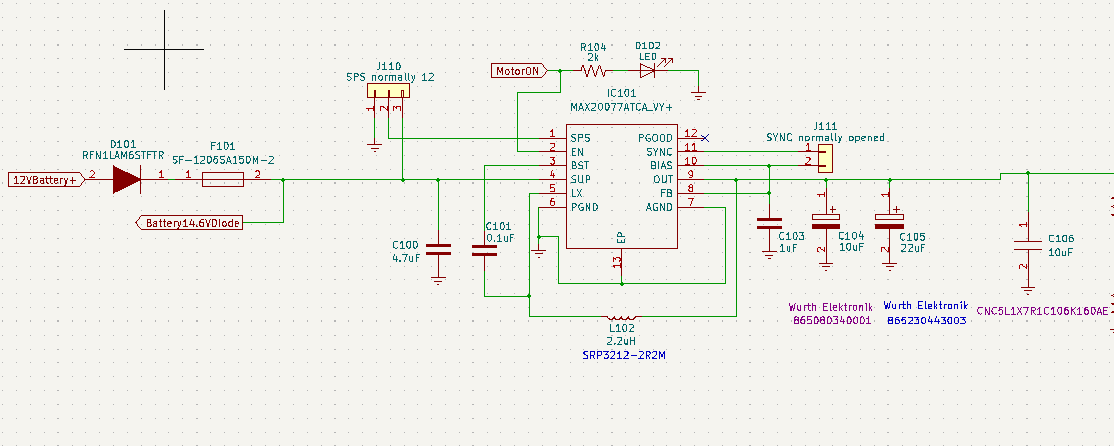I have a circuit which includes two back-to-back switching regulators. The first is used to take the input of 14 V to 5 V and the second charges a 2-cell lithium battery.
I have verified the problem to be with the first regulator. I cut the connection between the Vout of the 14 V to 5 V regulator and supplied the second regulator with a constant 5 V and it worked as intended.
The problem with the 14 V to 5 V regulator seems to be instability and a changing nominal output voltage. At 6 V Vin the regulator is outputting something close to 5 V, but as the input voltage increases (even to just 14 V), so does the instability and the nominal output voltage increases above 6 V which is too high for my application.
The ICs on the output side are outputting overvoltage protection at about 6 V. On the instability, I see the output voltage on the oscope having +/- 0.7 V on the nominal output voltage. I have fried my IC during testing, but can solder a new one on here shortly.
Why would the nominal output voltage of this regulator potentially rise with input voltage? If I add more capacitance on the output voltage will it smooth the output signal and prevent these voltage fluctuations?
Datasheets:
RFN1LAM6STFTR
MAX20077ATCA_VY+
SF-1206SA150M-2
SRP3212-2R2M
865080340001
865230443003
CNC5L1X7R1C106K160AE





